Where the forest feeds and fades
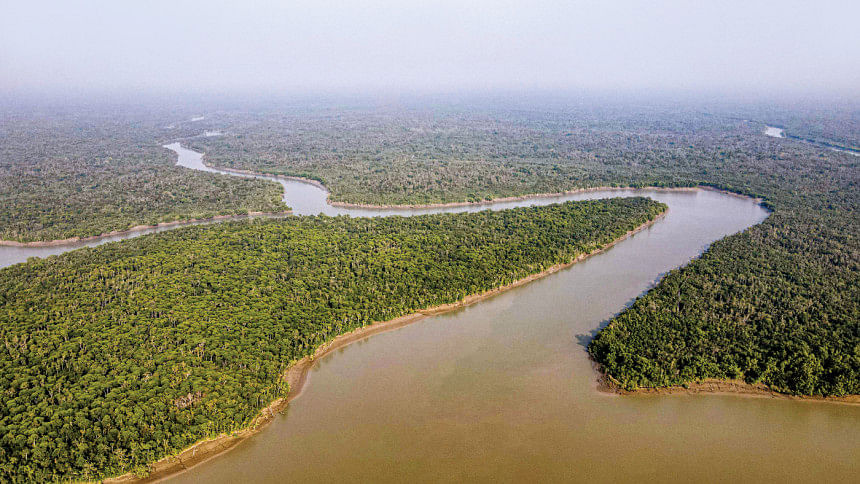
As the morning mist lifts over the vast expanse of the Sundarbans, the rhythmic splash of oars fills the air. Small wooden boats, mostly paddled by women, glide through narrow canals and creeks of the mangrove forest. Their mission is simple but essential -- catching fish, crabs, and shrimps from the forest's tidal waters to feed their families.
For generations, the women of Baidyamari, Joymoni, Keya Bunia, Telikhali, Gilar Khal, Gab Bunia, Madhya Holdi Buniya, and Purbachila -- all under the Chadpai range of the East Sundarbans -- have depended on the forest for their livelihoods. Whether it is fishing, crab collection, or harvesting honey and firewood, the forest has long been their lifeline.
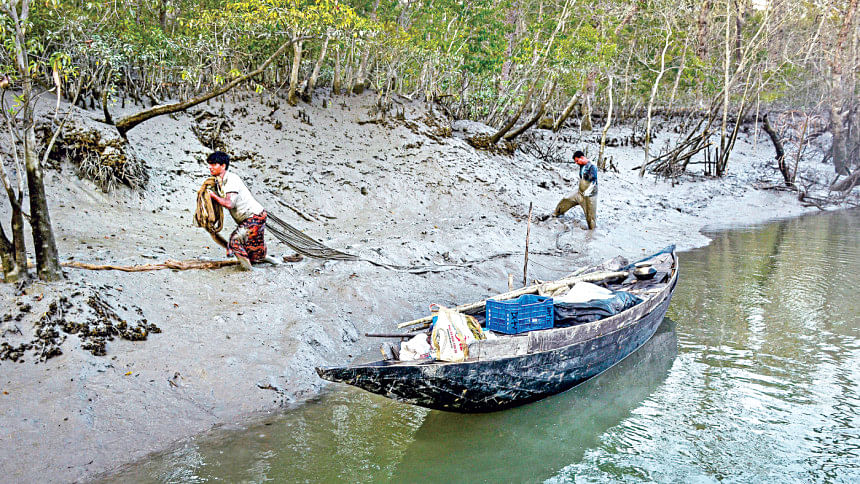
But today, that lifeline is fraying.
The Sundarbans, the world's largest mangrove forest and a Unesco World Heritage Site, is under growing threat. Overexploitation of natural resources, combined with population pressure and climate change, is pushing its delicate biodiversity to the brink.
The shrinking mangrove cover is now clearly visible. Frequent cyclones, rising sea levels, and saline intrusion are killing off key mangrove species such as Sundari, Goran, and Gewa. As the trees disappear, so do the habitats of countless species -- from deer to crocodiles to Bengal tigers.
In villages like Joymoni in Mongla's Chila union, the story is painfully familiar. Of the 380 fishing cards issued in the area, only 40 have been given to women, despite the fact that most families rely on female labour for fishing and crab collection. Without official recognition, these women are excluded from government training, financial aid, and safety nets during fishing bans. As a result, they are often compelled to enter the forest illegally.
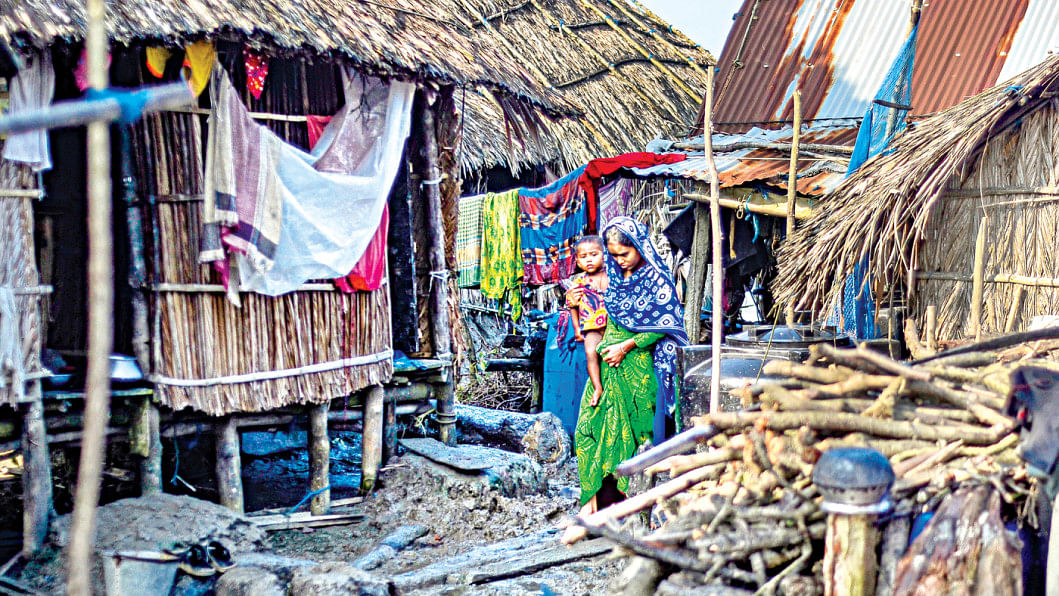
Monika Mondal, a fisherwoman and mother of two daughters, has been entering the forest with her husband since their marriage 21 years ago. "I never fished before marriage," she recalls. "But there's no other way to earn. We go out even during storms or tidal surges."
For Monika and others, the forest is not just a resource -- it is survival. "We go into the small canals before sunrise," she says. "Sometimes we catch enough to feed the family. Sometimes we return empty-handed."
But fishing isn't just about sustenance -- it also comes at a cost. The use of fine-mesh nets indiscriminately traps juvenile fish, depleting fish stocks. Crab collectors often disturb mudflats where endangered species breed. Even honey collection, often done by cutting branches to access hives, damages the forest's regeneration.
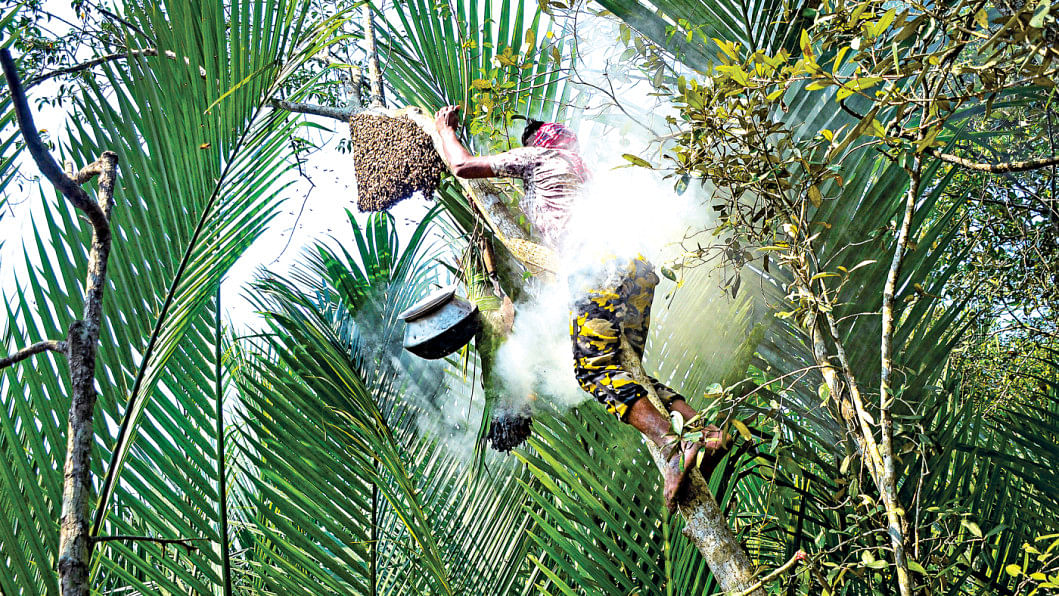
"We know we are harming the forest in some ways," admits Khurshida Begum, another fisherwoman from Joymoni. "But what choice do we have?"
"Every year, the number of boats entering the forest increases," says Dipon Chandra Das, assistant conservator of forests, East Sundarbans. "Unscrupulous people are cutting more wood, collecting more fish and crabs. The pressure is unsustainable."
The journey from Mongla to Baidyamari involves crossing the Pashur River by boat and then an hour-long motorcycle ride through winding village roads. Life here is deeply intertwined with the tides of the Sundarbans.
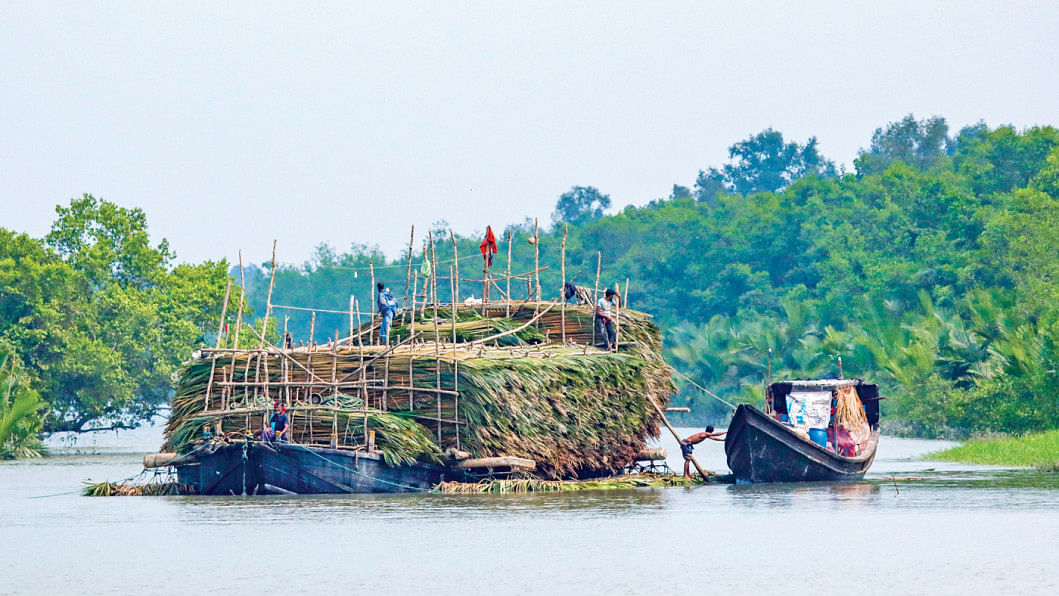
"Earlier, one trip into the forest could earn enough for several days," recalls Rahim Uddin, an elderly fisherman from Gab Bunia village. "Now we have to go deeper and stay longer, but the catch is less."
Many villagers expressed frustration about increasing restrictions imposed by the forest department and coast guard patrols. While necessary for conservation, these measures often lead to tension.
The Bangladesh Coast Guard and Forest Department have ramped up joint operations across the forest's southern belt. Regular patrols, enhanced surveillance, and collaboration with local communities have helped reduce forest-related crimes.
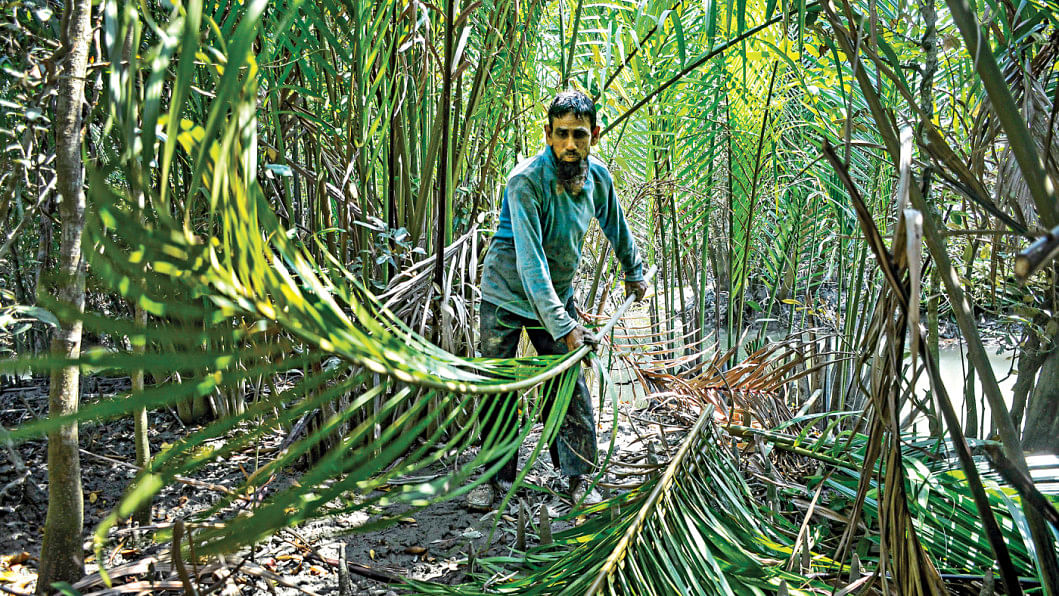
Speaking to The Daily Star, the zonal commander of the Coast Guard's West Zonesaid in the past four months alone, 49 individuals were arrested and 35 firearms recovered. "We are constantly exchanging views with local residents and working in coordination with the Forest Department to protect the forest," he said.
Illegal fishing, crab collection, unauthorised honey harvesting, tree felling, and deer poaching remain persistent threats. However, the increased use of routine and smart patrols has strengthened monitoring and brought many such crimes under control.
Balancing enforcement with empathy remains a challenge.
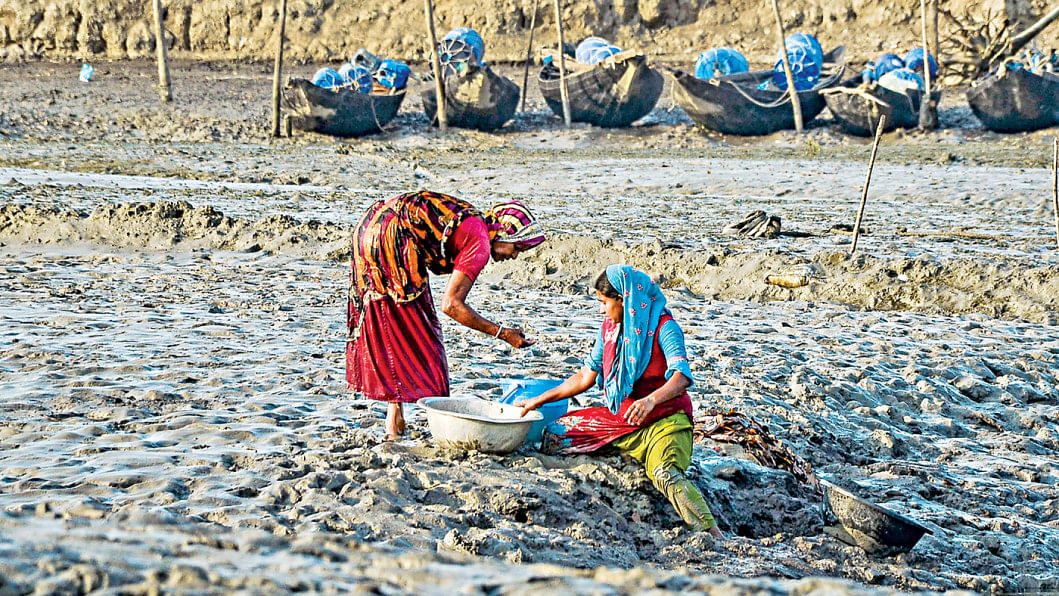
"We understand these people depend on the forest. But unsustainable use will destroy both the forest and their futures," the commander added.
"The degradation is accelerating," says Md Noor Alam Sk, an environmental worker from Bagerhat. "Overfishing, illegal wood collection, and honey harvesting are reducing the resilience of the Sundarbans. The mangrove is not just trees -- it is a complex ecosystem protecting Bangladesh from cyclones and tidal surges."
He said excessive human pressure and lack of ecological understanding among forest-dependent communities are causing irreversible damage.
"Mangroves act as natural barriers against storms. Without them, villages like Baidyamari and Joymoni are directly exposed to disasters," he said.
There are signs of hope.
Community-based organisations like Badabon Sangho are working to empower women by helping them acquire fisher ID cards and access training on sustainable practices. So far, the group has submitted applications for 152 women to receive official recognition as fishers.
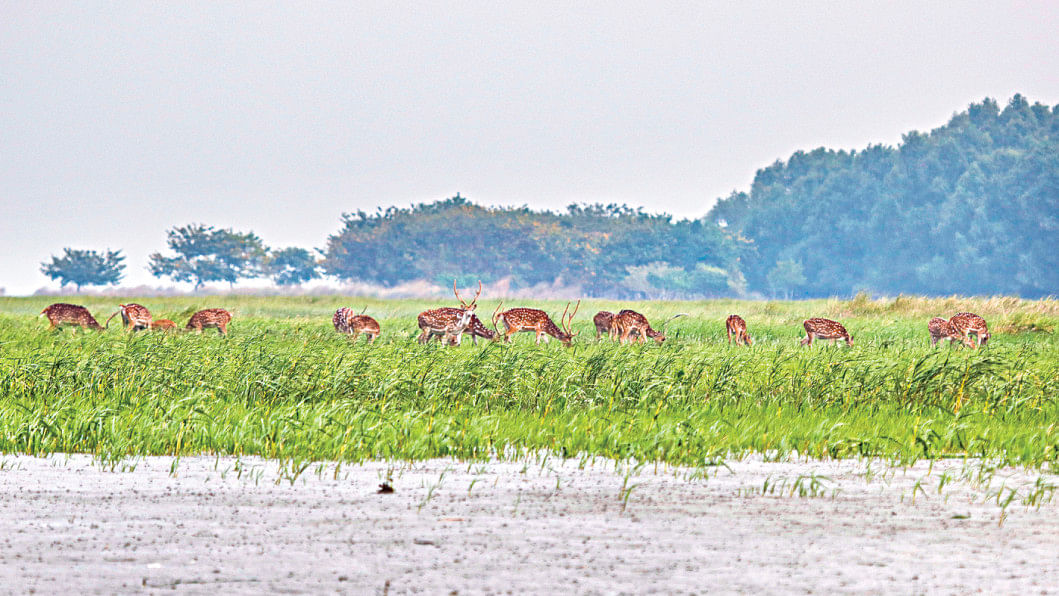
"We teach them that harming the forest ultimately harms their families," says Mehedi Hassan, a representative from the NGO. "Only when the forest thrives can their future be secured."
Workshops are also teaching villagers how to use crab traps that do not harm juvenile species, and how to harvest honey without cutting tree branches. Some are being trained to rear crabs in enclosures rather than depending solely on wild capture. However, change remains slow.
"It's not easy," says assistant conservator Das. "People need alternatives. You can't just tell someone to stop fishing if you don't provide another source of income."
He said a list of 5,500 legitimate fishers from coastal upazilas has been submitted to the District Fisheries Office. He hopes that with adequate financial aid during ban periods, these fishers will refrain from entering the forest illegally.
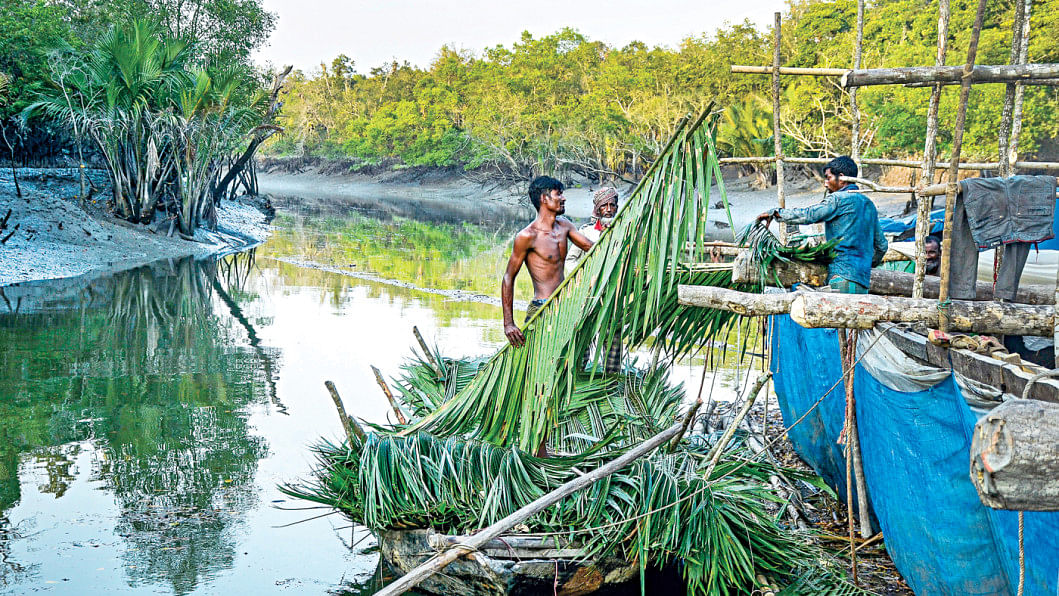
According to the Forest Department, 3,236 fishermen and 54 honey collectors are currently listed in the Chadpai range under the East Sundarbans.
Fishermen report that catches are declining. Cyclones like Sidr, Aila, and Amphan have repeatedly exposed the growing vulnerability of the coastal belt.
"Look at this tree line," gestures villager Karim Sheikh, pointing to a thinning patch of forest. "Ten years ago, it was dense. Now half the trees are gone."
As the sun sets over the tidal waters of the Sundarbans, the dilemma remains stark. The forest feeds its people, but those same people -- driven by poverty, necessity, and a lack of alternatives -- are contributing to its destruction.
"We don't want to harm the forest," says Tandra Mondal of Joymoni village. "But if we don't fish, our children won't eat. If the forest dies, we die." This is not just the story of a forest or a community. It is the story of the fragile balance between human survival and nature's endurance -- a balance that is dangerously close to tipping.

 For all latest news, follow The Daily Star's Google News channel.
For all latest news, follow The Daily Star's Google News channel. 



Comments